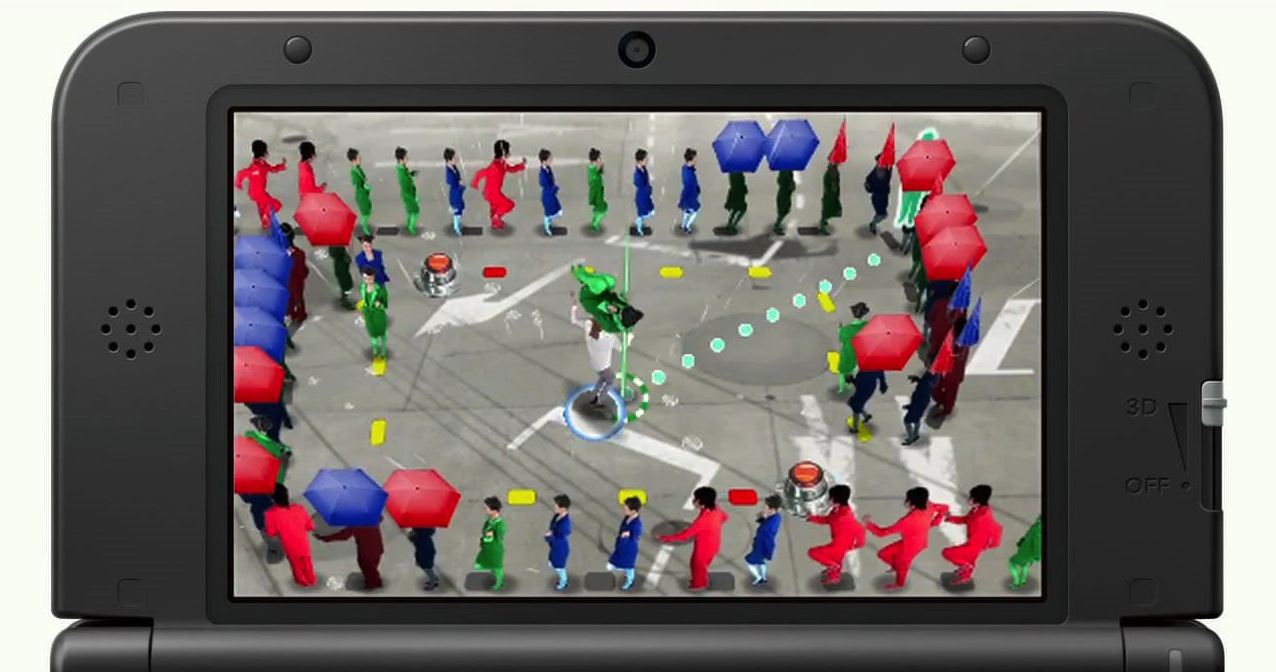
Time was when most games were blips and squares. Then colorful sprites gave characters a more defined, less abstract look. Then came Pit-Fighter.
In the early ’90s, the arcade fighting game from Midway came out and eschewed the cartoony look of classic brawlers like Kung Fu or Final Fight. Pit-Fighter used digitized graphics, essentially photographs of actors reproduced in-game, instead of hand-drawn animation or pixel art. It was a leap in realism for the time, and, along with Mortal Kombat and NBA Jam, established digitized graphics as the de rigeuer look of the period.
Alas, that ship had sailed by the time the decade was over, as more powerful and smaller chipsets allowed for an abundance of polygons to take the place of shoddily-animated photographs. But everything old is new again: Behold, the grandeur of Tokyo Crash Mobs.
– – –

Developed by Mitchell Corporation and based on their original 1998 title Puzz Loop, the game is essentially a Match-Three puzzler, but instead of gems, you match people. You control one of two characters, Savannah and Grace, who hate waiting in lines and have developed a propensity for throwing strangers. By dragging your stylus on the 3DS touch-screen, you aim and toss one brightly-colored scenester after the other into the crowded queue; match three or more and the “clique” disappears, with the potential to rack up high scores and fast times by planning combos. If you’ve played PopCap’s Zuma (a take-off of Mitchell Corp.’s original), you’ve played a version of this game.
Oh, but you really haven’t. The sheer absurdity on display here is part-and-parcel of the experience. Tokyo Crash Mobs harkens back to a period when seeing real people was a glimpse into the future. All in-game characters are digitized actors with rigid animation. Interstitial cut-scenes are full-motion video short films. In 1993, this was cutting-edge stuff. In 2013, the effect works as more of a joke than an indicator of visual prowess. But still, the aesthetic is striking, and begs the question: what other past styles might be reincarnated from the dustbin of development history?
Other mediums seem to be digging through their archives to polish old trends. The Artist is a notable example of a film that once was the norm, then cast aside for decades due to advancing methods, only to return amid much praise. Games such as Mega Man 9, Spelunky and Minecraft show the long-growing appetite for experiences not on the visual cutting edge, but solid designs built around enduring, seasoned techniques.
The games industry is still so young. But as time goes on, one mark of a maturing medium is its ability, and desire, to not only forge ahead into new territory but also mine the rich lexicon of its past.
In the meantime, go download Tokyo Crash Mobs and gawk in confused amazement. It’s available on the Nintendo 3DS eShop now.